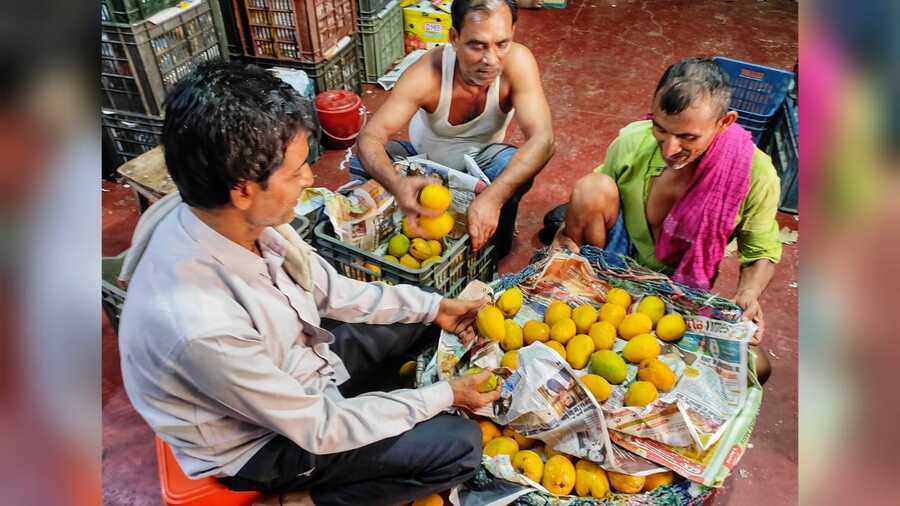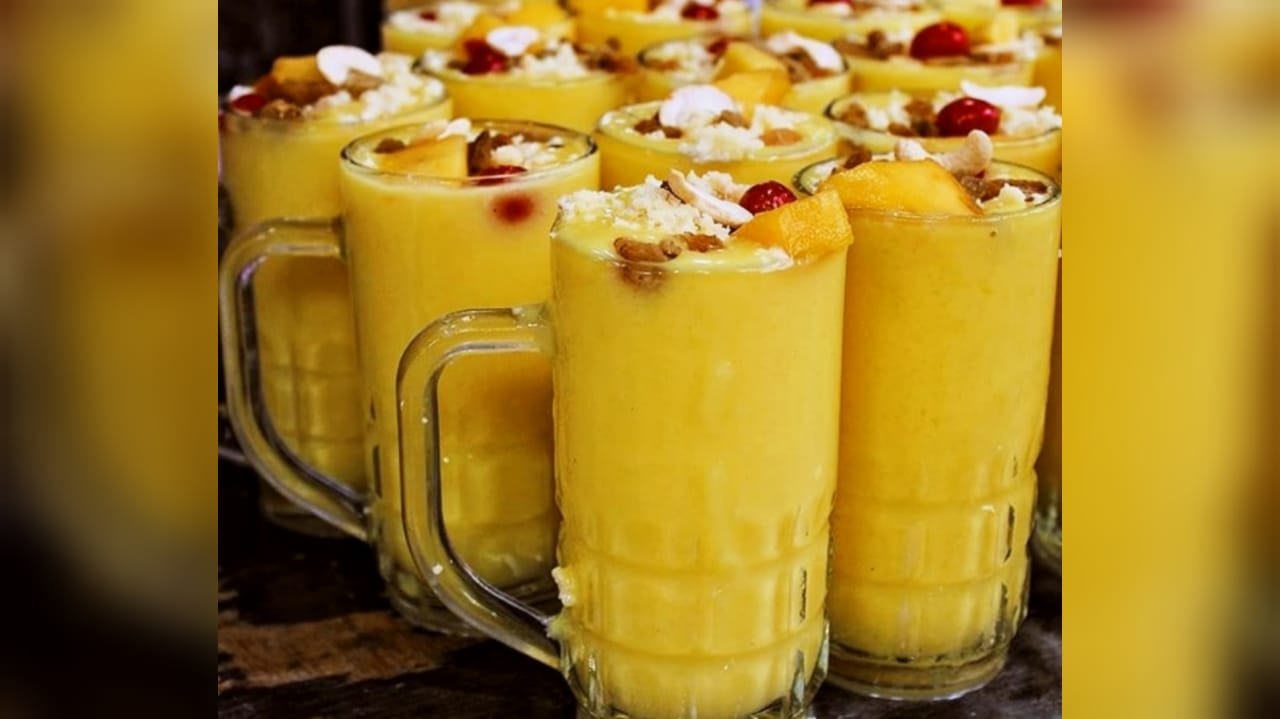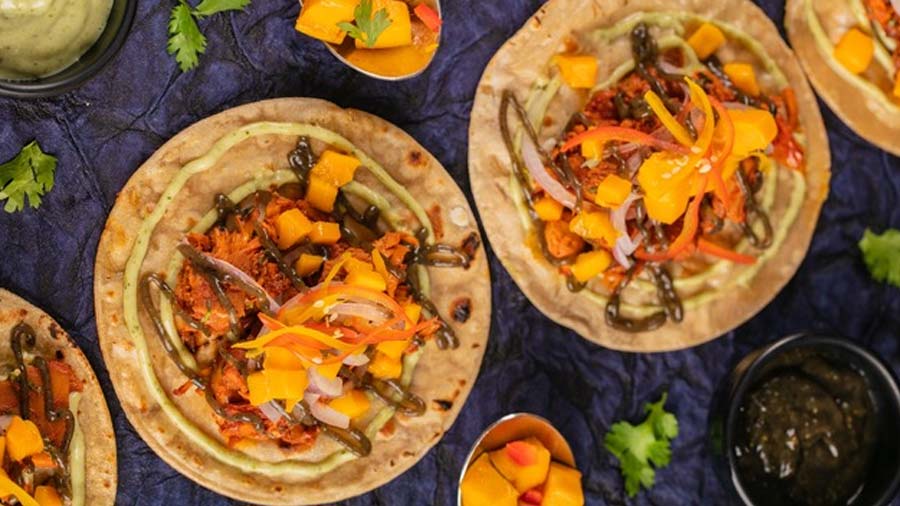The one thing that brings a spot of joy in the sweltering summer days of Kolkata is the sight of succulent, sweet mangoes. As the calendar ambles towards June, the fruit arrives, ready to rule our palates and hearts. Of different shapes and sizes, textures and aroma — the luscious fruit is the cynosure of summers.
The history of mango dates back about 4,000 to 5,000 years to regions in India and Southeast Asia. The diversity of the fruit is immense, with around 1,500 varieties grown in India alone.
What’s in a name?

Mango vendors at Mechua Bazar Amit Datta
This ‘king of fruits’ has been around for so long, and with so many varieties growing in different parts of the same place, the regional names of mangoes are often derived from stories and folklore.
Bengal’s Phojli (Fazli) aam is supposedly named after a girl named Phojli, Langra (also known as Hapus) is said to have gotten its name a few hundred years ago from a handicapped fakir in Benaras, who grew a mango plant in his backyard.
In the Bihar-Jharkhand region of Mithila, the Krishna bhog variety is reportedly named after a popular Brahmin man Krishnaprasad Thakur. Even the globally famous Alphonso is reportedly named after Portuguese trader Afonso de Albuquerque.
Some of these names are well known, such as Dasheri, Golapkhash, Safeda, Banginapalli. There are others with unusual names that grow in a small geographical area like the Frezbani, Mrindaboni, Chokchokia, Rani Pasand, etc. Even surnames have been used to name mangoes like the Chatterjee and Banerjee mangoes. With the introduction of grafting techniques, family-owned orchards and farmers often came up with newer varieties that grew in a small region.
Crowning the king

From Banginapalli and Golapkhash, to many others, there’s a veritable selection of mangoes in every corner of Kolkata every year Amit Datta
To a Bengali, there is little argument on the fact that the mango is the king of fruits, but which of the many types is the ruler among the lot often causes debate. Along with the Bangali squabbles of Ghoti vs Bangal and ilish vs chingri, is the age-old debate of the Himsagar versus the Langra. And both sides have their own set of opinions on the matter.
But the love for mangoes prevails and every Kolkata family will savour the summer fruit with gusto and love. When the season of the mango comes rolling in, the red carpet is rolled out, no matter the type of mango. Kitchens will be stocked with green, tart mangoes for special recipes, cafes and restaurants will have special menus and the creamy, sweet mango is celebrated by all.

Mango lassi at a stall in Esplanade Wikimedia Commons
An epicurean experience
Every nook and corner of Kolkata, and West Bengal, is filled with mangoes, and there’s always a mango seller around the corner. Though mangoes are available almost everywhere, some markets are noteworthy as hubs, where even local vendors procure their supplies.
One of them is Mechua Bazar, which is also known as a whole hub of fruits. The market in the Burrabazar area is popularly known as the Mechua Bazar Phal Mandi. The bustling spot is busy throughout the day as various varieties of fruits are loaded and unloaded for transportation and sale. Naturally, as mid-May arrives, the air is rife with the scent of ripe mangoes.

College Street night market for fruits operates from 11pm to about 1am Suvendu Dey
Another area where mangoes are available in abundance is College Street. While books are what come to mind at the first mention of College Street, come night there is a busy market in boi para. Starting at 11pm, the market used to continue till 4am. But, with the unprecedented norms of the new normal, it winds up close to 1am now. In those few hours however, the whole stretch of the road connecting College Street market to MG Road is filled with wicker baskets full of sweet, juicy mangoes.


